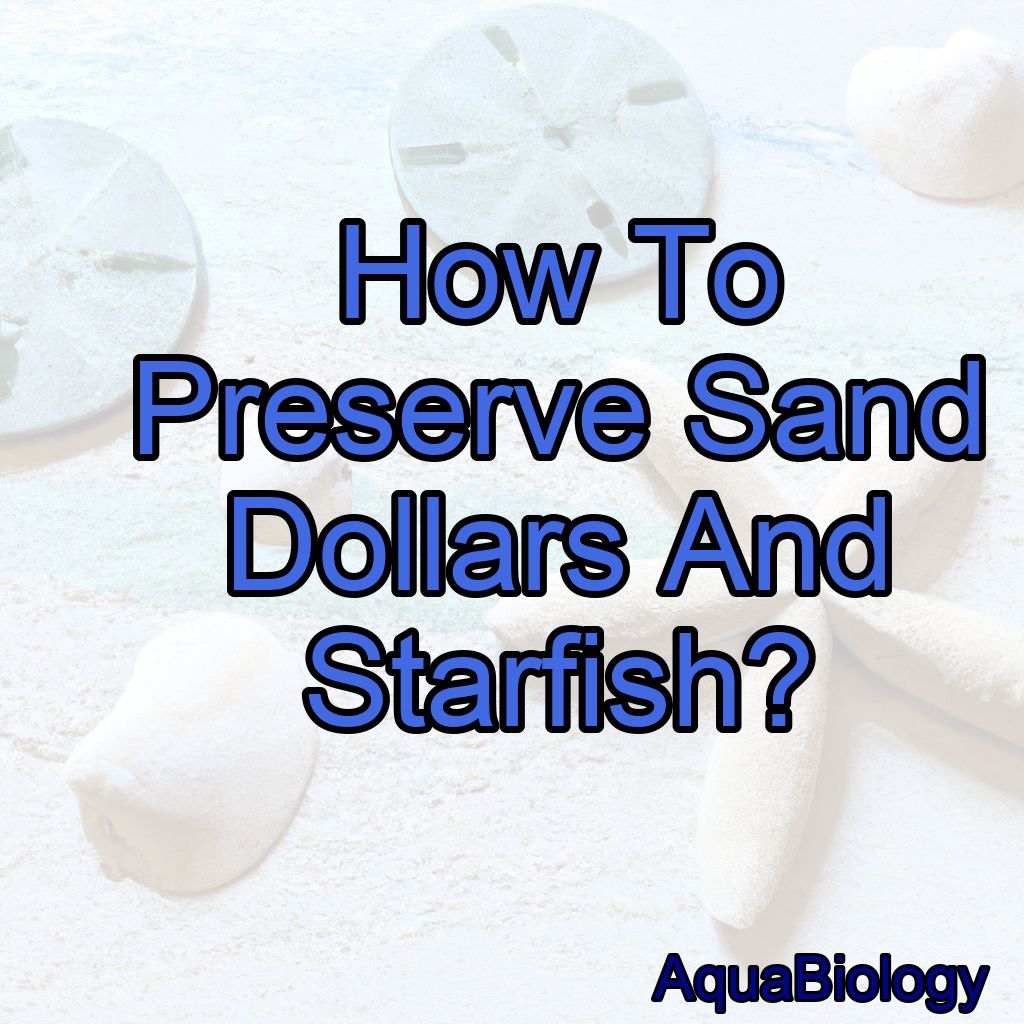As a marine biologist, I have always been fascinated by the beauty of sand dollars and starfish.
Clean them thoroughly, soak in a bleach solution, rinse and dry, then coat with a clear sealant or glue mixture.
These delicate creatures are not only aesthetically pleasing but also play an important role in marine ecosystems.
However, preserving them can be a tricky task.
In this blog post, I will share my knowledge and experience on how to preserve sand dollars and starfish.
The Importance of Preserving Sand Dollars and Starfish
Sand dollars and starfish are essential components of marine ecosystems.
They play a crucial role in the food chain, serving as prey for larger animals such as sea birds, crabs, and fish.
They are also important indicators of the health of the marine environment.
The presence of sand dollars and starfish in an area indicates a healthy and diverse ecosystem.
Tips for Preserving Sand Dollars and Starfish
1. Handle with Care: The first and most important tip for preserving sand dollars and starfish is to handle them with care. These creatures are delicate and can easily break or lose their limbs if mishandled. When handling sand dollars and starfish, use gentle and slow movements.
2. Clean Them Gently: When cleaning sand dollars and starfish, use a soft-bristled brush or a toothbrush. Gently brush off any sand or debris from their surface. Do not use water or any cleaning solution as it can damage their fragile bodies.
3. Air Dry Them: After cleaning, let them air dry on a clean and dry surface. Do not expose them to direct sunlight or heat as it can cause them to warp or crack.
4. Preserve Them in a Solution: To preserve sand dollars and starfish, you can use a solution of water and bleach. Mix one part bleach with three parts water and soak the creatures in the solution for 10-15 minutes. Rinse them thoroughly with freshwater and air dry them.

5. Use a Protective Coating: To protect the sand dollars and starfish from damage and discoloration, you can use a protective coating such as clear nail polish or a varnish.
6. Store Them Properly: Once the sand dollars and starfish are dry, store them in a dry and cool place. You can use airtight containers or ziplock bags to prevent any moisture or dust from getting in.
7. Handle Them with Gloves: When handling preserved sand dollars and starfish, wear gloves to prevent any oils or dirt from your hands from damaging them.
#
Conclusion
Preserving sand dollars and starfish is essential for maintaining the health and diversity of marine ecosystems.
To preserve them, handle them with care, clean them gently, air dry them, preserve them in a solution, use a protective coating, store them properly, and handle them with gloves.
Remember, these creatures are delicate and should be treated with respect.
By following these tips, you can enjoy the beauty of sand dollars and starfish for years to come.
- Facts:
1. Sand dollars and starfish are essential components of marine ecosystems.
2. Sand dollars and starfish can easily break or lose their limbs if mishandled.
3. To preserve sand dollars and starfish, use a solution of water and bleach.
4. Protective coatings such as clear nail polish or varnish can protect sand dollars and starfish from damage and discoloration.
5. When handling preserved sand dollars and starfish, wear gloves to prevent any oils or dirt from your hands from damaging them.
FAQs
How do you clean and preserve sand dollars?
To clean and preserve sand dollars, gently rinse them in fresh water, soak them in a solution of half water and half bleach for a few minutes, and then rinse them again in fresh water.
Allow them to dry completely in the sun or a well-ventilated area.
To preserve them, you can apply a mixture of equal parts water and white glue to both sides of the sand dollar and let it dry completely.
How do you dry sand dollars quickly?
It is not recommended to try and dry sand dollars quickly as it can damage them.
Instead, gently rinse them in clean water and let them air dry naturally.
It may take several days for them to fully dry.
Avoid using heat or direct sunlight to dry them as this can cause them to warp or crack.
How long can a sand dollar stay alive out of water?
Sand dollars can only survive out of water for a short period of time, usually no more than a few minutes to an hour.
What is the best way to dry out sand dollars?
The best way to dry out sand dollars is to place them in a solution of half water and half bleach for a few minutes, then rinse them in fresh water and let them air dry completely in a warm, dry location.
What can I put on sand dollars to harden them?
A mixture of equal parts water and white glue (such as Elmer’s) can be brushed onto sand dollars to harden and preserve them.
What is the best way to preserve sand dollars?
The best way to preserve sand dollars is to soak them in a solution of water and bleach for a few minutes, then rinse them with fresh water and let them dry completely in the sun or a well-ventilated area.
It’s important to handle them gently and avoid using any harsh chemicals or scrubbing them too vigorously.




